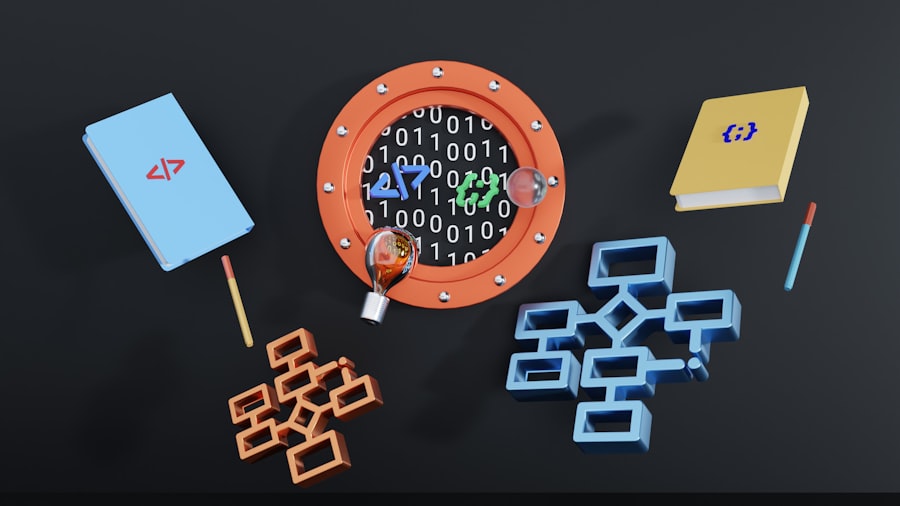Ethereum gas fees are a fundamental aspect of the Ethereum blockchain, serving as a mechanism to compensate miners for the computational work required to process transactions and execute smart contracts. Gas fees are denominated in Gwei, which is a subunit of Ether (ETH), where one Ether equals one billion Gwei. Each operation performed on the Ethereum network requires a certain amount of gas, which is determined by the complexity of the operation.
For instance, a simple transaction might require 21,000 gas units, while executing a more complex smart contract could demand significantly more, depending on the number of operations involved. The gas fee structure is designed to create an economic incentive for miners to prioritize transactions. Users specify a gas price they are willing to pay, and miners select transactions based on the highest fees offered.
This creates a competitive environment where users may need to adjust their gas prices based on network congestion. During periods of high demand, such as during Initial Coin Offerings (ICOs) or significant market movements, gas prices can skyrocket, leading to exorbitant transaction costs. Understanding this dynamic is crucial for anyone engaging with the Ethereum network, as it directly impacts the cost-effectiveness of transactions and the overall user experience.
Key Takeaways
- Understanding Ethereum Gas Fees:
- Gas fees are the transaction fees required to successfully execute operations on the Ethereum network.
- Gas fees are paid in Ether and are determined by the complexity of the operation being performed.
- Current Challenges with Gas Fee Efficiency:
- High gas fees have become a major concern for Ethereum users, especially during periods of network congestion.
- The volatility of gas fees makes it difficult for users to predict and optimize their transaction costs.
- Predictions for Future Gas Fee Optimization:
- The implementation of Ethereum Improvement Proposal (EIP) 1559 is expected to improve gas fee efficiency by introducing a base fee and a tipping mechanism.
- Leveraging Layer 2 Solutions for Gas Fee Efficiency:
- Layer 2 solutions, such as rollups and sidechains, offer potential for reducing gas fees by offloading transactions from the Ethereum mainnet.
- The Role of EIP-1559 in Gas Fee Optimization:
- EIP-1559 aims to make gas fees more predictable and reduce the impact of network congestion by adjusting the base fee based on demand.
- The Impact of Ethereum 2.0 on Gas Fees:
- Ethereum 2.0, with its transition to a proof-of-stake consensus mechanism, is expected to significantly reduce gas fees and improve scalability.
- Strategies for Minimizing Gas Fees in Smart Contract Development:
- Smart contract developers can optimize gas fees by writing efficient code, minimizing storage and computational requirements, and leveraging gas estimation tools.
- The Importance of Monitoring Gas Fee Trends for Optimization:
- Keeping track of gas fee trends and network congestion is crucial for optimizing transaction costs and choosing the right time to execute transactions on the Ethereum network.
Current Challenges with Gas Fee Efficiency
Despite its innovative design, the Ethereum network faces significant challenges regarding gas fee efficiency. One of the primary issues is network congestion, which occurs when the number of transactions exceeds the network’s capacity to process them. This congestion leads to increased competition among users to have their transactions included in the next block, driving gas prices higher.
For example, during the DeFi boom in 2020, many users reported gas fees exceeding $100 for simple transactions, making it prohibitively expensive for smaller investors to participate in the ecosystem. Another challenge is the unpredictability of gas fees. Users often find it difficult to estimate the appropriate gas price for their transactions, leading to either overpayment or failed transactions due to insufficient gas.
The Ethereum network does not provide a straightforward mechanism for users to gauge real-time gas prices accurately. This lack of transparency can deter new users and create frustration among existing participants who may not have the technical expertise to navigate these complexities effectively.
Predictions for Future Gas Fee Optimization

As Ethereum continues to evolve, several predictions can be made regarding the future optimization of gas fees. One significant trend is the anticipated impact of Ethereum 2.0, which aims to transition the network from a proof-of-work (PoW) consensus mechanism to proof-of-stake (PoS). This shift is expected to enhance scalability and reduce congestion, ultimately leading to lower gas fees.
With the introduction of sharding—a method that divides the blockchain into smaller, more manageable pieces—Ethereum could process many more transactions simultaneously, alleviating some of the pressure on gas prices. Moreover, advancements in Layer 2 solutions are likely to play a crucial role in optimizing gas fees. Technologies such as rollups and state channels allow transactions to be processed off-chain while still leveraging the security of the Ethereum mainnet.
These solutions can significantly reduce the cost per transaction by bundling multiple operations into a single on-chain transaction. As these technologies mature and gain wider adoption, users can expect a more efficient and cost-effective experience when interacting with decentralized applications (dApps) on Ethereum.
Leveraging Layer 2 Solutions for Gas Fee Efficiency
| Layer 2 Solution | Gas Fee Efficiency | Transaction Speed |
|---|---|---|
| Optimistic Rollup | High | Fast |
| ZK-Rollup | Very High | Very Fast |
| Sidechains | Variable | Variable |
Layer 2 solutions have emerged as a promising avenue for addressing Ethereum’s gas fee challenges. These solutions operate on top of the Ethereum blockchain and enable faster and cheaper transactions by processing them off-chain. One notable example is Optimistic Rollups, which allow multiple transactions to be bundled together and submitted as a single transaction on the mainnet.
This approach not only reduces the overall gas fees but also enhances transaction throughput, making it feasible for applications that require high-frequency interactions. Another Layer 2 solution gaining traction is zk-Rollups, which utilize zero-knowledge proofs to validate transactions without revealing sensitive information. This technology allows for greater scalability while maintaining privacy and security.
By leveraging these Layer 2 solutions, developers can create dApps that offer users a seamless experience with significantly lower transaction costs. As more projects adopt these technologies, it is expected that the overall demand for on-chain transactions will decrease, leading to a more balanced gas fee environment.
The Role of EIP-1559 in Gas Fee Optimization
EIP-1559, or Ethereum Improvement Proposal 1559, represents a significant change in how gas fees are structured on the Ethereum network. Implemented in August 2021 as part of the London Hard Fork, EIP-1559 introduced a new fee model that aims to improve user experience and enhance fee predictability. Under this model, each transaction includes a base fee that adjusts dynamically based on network demand, along with an optional tip that users can provide to incentivize miners to prioritize their transactions.
This new mechanism addresses some of the inefficiencies associated with the previous first-price auction model by providing users with clearer expectations regarding gas fees. The base fee is burned rather than paid directly to miners, which has implications for Ether’s supply dynamics and could potentially lead to deflationary pressure over time. By reducing uncertainty around gas fees and creating a more predictable environment for users, EIP-1559 has laid the groundwork for improved transaction efficiency on the Ethereum network.
Increased Throughput and Lower Gas Fees
One of the most highly anticipated features of Ethereum 2.0 is sharding, which will enable multiple chains to operate in parallel, effectively increasing the network’s capacity to process transactions. This increased throughput is expected to alleviate congestion during peak times, leading to lower gas fees for users.
A Boost to Network Performance and Adoption
Ethereum 2.0’s focus on improving overall network performance will likely attract more developers and projects to build on the platform. As more decentralized applications (dApps) emerge and user adoption grows, maintaining low gas fees will be essential for ensuring that Ethereum remains competitive against other blockchain platforms.
A Leading Blockchain Solution for Decentralized Applications
The successful implementation of Ethereum 2.0 could position Ethereum as a leading blockchain solution for decentralized applications, fostering an environment where users can transact with minimal costs.
Strategies for Minimizing Gas Fees in Smart Contract Development

Developers can employ several strategies to minimize gas fees when creating smart contracts on Ethereum. One effective approach is optimizing code efficiency by minimizing unnecessary computations and storage operations within smart contracts. For instance, using simpler data structures or avoiding complex loops can significantly reduce gas consumption during execution.
Developers should also consider utilizing libraries that are known for their efficiency and have been audited for best practices. Another strategy involves batching transactions whenever possible. By grouping multiple operations into a single transaction, developers can take advantage of reduced overall gas costs compared to executing each operation individually.
This technique is particularly useful in scenarios where multiple state changes are required within a single contract interaction. Additionally, developers should stay informed about current gas prices and deploy contracts during periods of lower network activity to further reduce costs.
The Importance of Monitoring Gas Fee Trends for Optimization
Monitoring gas fee trends is essential for both users and developers looking to optimize their interactions with the Ethereum network. By keeping track of historical data regarding gas prices and network congestion patterns, users can make informed decisions about when to execute transactions or interact with dApps. Tools such as EthGasStation provide real-time insights into current gas prices and can help users determine optimal times for their transactions.
For developers, understanding gas fee trends can inform design decisions and lead to more efficient smart contract development practices. By analyzing peak usage times and adjusting deployment strategies accordingly, developers can minimize costs for end-users while ensuring their applications remain competitive in an ever-evolving landscape. As Ethereum continues to grow and adapt, staying attuned to gas fee trends will be crucial for maximizing efficiency and enhancing user experiences across the platform.
If you are interested in learning more about Ethereum Gas Fees and predictions for future optimization, you may want to check out the article “Hello World” on ETH News. This article provides valuable insights into the current state of gas fees on the Ethereum network and offers predictions for how these fees may be optimized in the future. ETH News is a reliable source for staying up to date on all things related to Ethereum and blockchain technology.
FAQs
What are Ethereum gas fees?
Ethereum gas fees are the costs associated with making transactions or executing smart contracts on the Ethereum blockchain. These fees are paid in Ether (ETH) and are used to compensate miners for including transactions in a block and securing the network.
Why are Ethereum gas fees high?
Ethereum gas fees can be high due to network congestion, which occurs when there are more transactions being submitted than the network can process. This leads to increased competition for block space, driving up the fees.
What are some predictions for future optimization of Ethereum gas fees?
Some predictions for future optimization of Ethereum gas fees include the implementation of Ethereum 2.0, which aims to improve scalability and reduce congestion on the network. Additionally, layer 2 solutions such as rollups and sidechains are expected to alleviate the burden on the main Ethereum chain and reduce gas fees.
How can users mitigate the impact of high gas fees?
Users can mitigate the impact of high gas fees by choosing to transact during off-peak hours, using gas fee estimation tools to determine optimal fees, and exploring alternative networks or layer 2 solutions that offer lower fees. Additionally, developers can optimize their smart contracts to reduce gas consumption.





